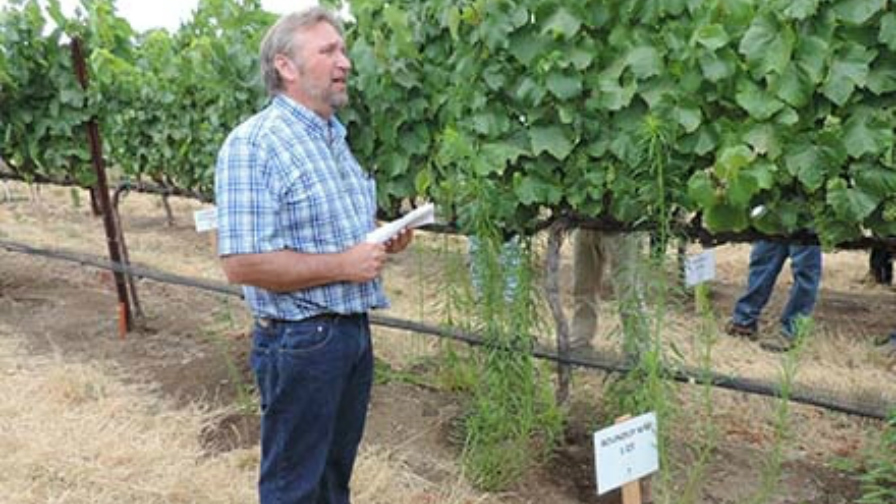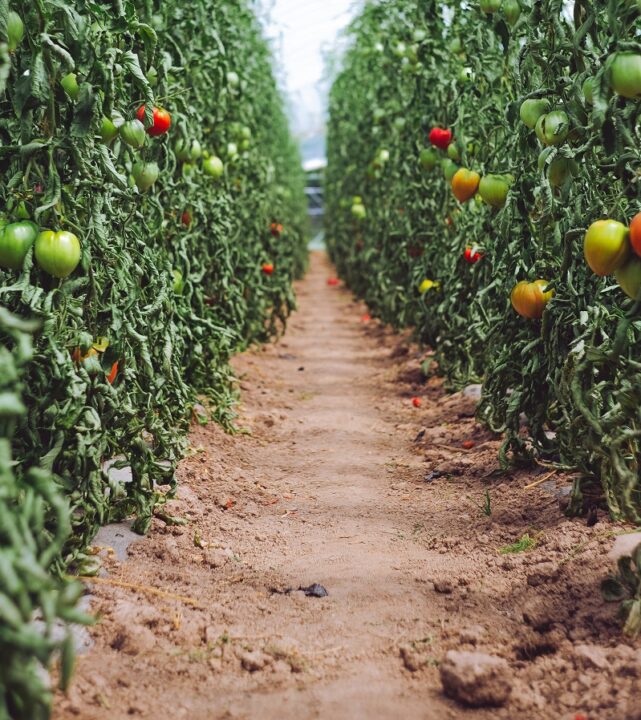Vineyard Weed Control Should Start Now

Weed science advisor John Roncoroni explains that Roundup doesn’t do much for horseweed during a presentation about the use of herbicides in vineyards. (Photo credit: University of California Division of Agriculture and Natural Resources)
With harvest ending, weed control might not be top of mind at a lot of vineyards. But it should be, according to University of California weed science farm advisor.
John Roncoroni, who’s with Napa County Cooperative Extension, says that getting ahead of next year’s weeds should start this year, probably sooner than some are used to. While many growers wait until the first frost and leaves to start falling, that actually reduces the effectiveness of herbicides.
“The grape leaves are either blocking the herbicides from getting to the ground, or they’re hiding things that have already germinated,” he says.
Here are Roncoroni’s tips for effectively managing weeds this fall going into the next growing season:
- Study now. Figure out the types of weeds that are a problem in your vineyard and determine the types of herbicides that will be effective against those weeds. That might mean using something other than glyphosate, especially if your problem weeds are those known to have tolerance to the popular herbicide.
The University of California Agriculture & Natural Resources Integrated Pest Management website can be a good resource. - Spray as soon as possible after harvest: It’s a busy time, but since the beginning of July, most growers haven’t been working on much weed control. That means weeds have had several months to take advantage of irrigation, and they’re coming on strong. We’re looking at 2 months of warm weather and irrigation. Perfect conditions for weeds to start growing,” Roncoroni says.
Those weeds also get in the way of the pre-emergents many growers use early next year, making them less effective. And, as noted above, waiting until leaf drop means more debris in the way of herbicides. - Consider cultivating. Some growers are moving to no-till, but Roncoroni says churning up the soil at least every other year can help keep weeds at bay. “If you’re in a post-emergent-only regine, one year use a pre-emergent herbicide, or one year, do a light cultivation,” he says.










